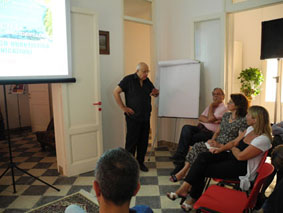“La mappa non è il territorio” è il modo con il quale si definisce il nostro modello di realtà, un’esperienza soggettiva derivante dal proprio dna e dall’ambiente.
Vivere nell’ambito del proprio modello ci fa sentire sicuri e protetti, ma in questo modo non siamo altro che mammiferi nel proprio habitat con l’unico scopo di sopravvivere come specie.
Qualcuno, tuttavia, non è soddisfatto della sua realtà e di come vive.
Comincia a porsi domande.
Si chiede perché ri-proponga sempre gli stessi comportamenti, perché continui a coltivare le stesse relazioni che riconosce sbagliate, perché commetta sempre gli stessi errori. Vorrebbe cambiare, ma scopre dentro di sé una naturale resistenza al cambiamento: the mammal does not want to abandon his confidence,,it,the emotions that keep him tied to the past,,it,He prefers the foreseeable future,,it,natural continuation of its past,,it,However,,it,insists,,es,He knows he has within himself the potential to break thought patterns that do not like,,it,to break the continuous cycle of a program that recognizes threadbare and repetitive,,it,It can create new projections of reality,,it,The latest developments in the neurosciences are helpful,,it,give ample evidence that we are not our models,,it,we are much more than what we think we are and we can be even more,,it, le emozioni che lo tengono legato al passato; preferisce un futuro prevedibile, naturale prosecuzione del suo passato. Tuttavia, insiste.
Sa di avere dentro di sé le potenzialità per spezzare gli schemi di pensiero che non gli piacciono, di rompere il ciclo continuo di un programma che riconosce logoro e ripetitivo, di poter creare nuove proiezioni di realtà.
Gli ultimi sviluppi delle neuroscienze gli sono d’aiuto, danno ampie dimostrazioni che noi non siamo i nostri modelli, siamo molto di più di ciò che crediamo di essere e possiamo essere ancora di pi














